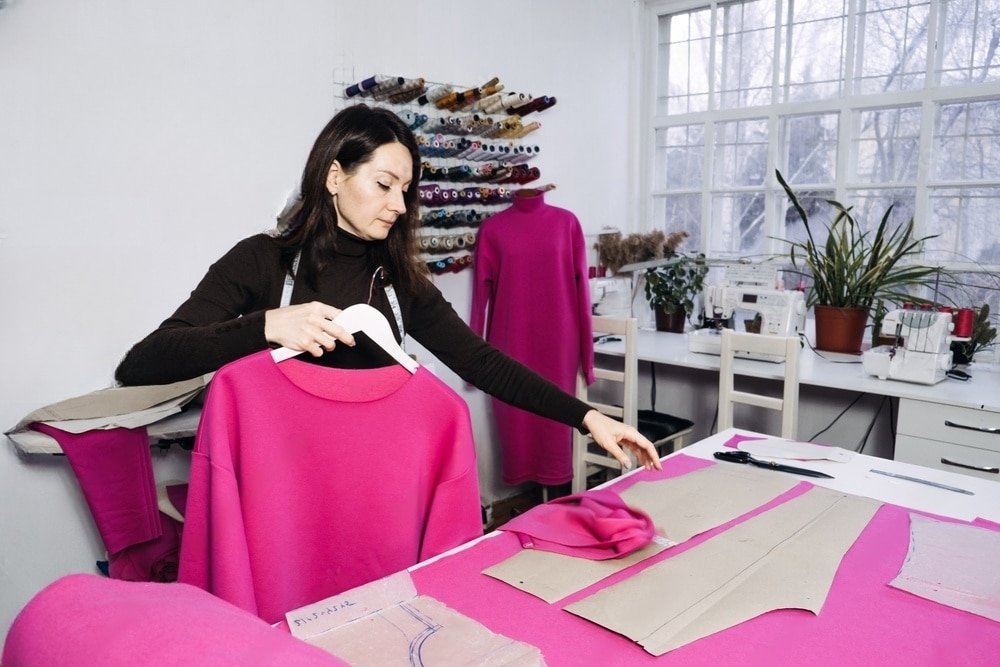Cost Factors in Clothing Line: How Much Does It Cost to Work with a Clothing Manufacturer?
Starting a clothing line can be a dream come true for many aspiring fashion entrepreneurs. Whether you want to create a niche luxury brand or offer affordable everyday wear, there are many cost factors in clothing line to consider. One of the most critical aspects of running a successful clothing line is understanding the costs associated with manufacturing. Working with a clothing manufacturer can be both exciting and daunting, but knowing the cost factors can help you make informed decisions and build a sustainable business. In this comprehensive guide, we will explore the various cost factors involved in working with a clothing manufacturer, helping you navigate the complex world of fashion production. 1. Design and Development Costs Before you even approach a clothing manufacturer, you’ll need to invest in design and development. This phase includes creating sketches, tech packs, patterns, and prototypes. Here are some design and development cost considerations: a. Design Services: If you’re not a designer yourself, you may need to hire a professional fashion designer to bring your ideas to life. The cost of design services can vary widely, depending on the designer’s experience and reputation. b. Tech Packs: These are detailed documents that outline the specifications for each garment. They are essential for manufacturing and can be created by a designer or a technical designer. c. Pattern Making: Creating accurate patterns is crucial for producing well-fitting garments. Pattern makers charge based on their expertise and complexity of the designs. d. Prototyping: Before mass production, you’ll need to create prototypes to test your designs. This can be a significant expense, especially if you make multiple iterations to get the design just right. 2. Material Costs The choice of materials can greatly impact your clothing line’s cost, quality, and overall appeal. Consider the following material cost factors: a. Fabric Selection: The type and quality of fabric you choose will affect the cost. Luxurious fabrics like silk or cashmere will be more expensive than basic cotton or polyester. Read more: How to Choose Right Fabric b. Minimum Order Quantities (MOQs): Manufacturers often require a minimum quantity of fabric to be ordered. Smaller orders may incur higher costs per yard, while larger orders can yield discounts. Read more: Low MOQ Clothing Manufacturer c. Sourcing Suppliers: Researching and finding reliable fabric suppliers is a time-consuming task. Consider the cost of travel or communication with potential suppliers. Read more: Fabric Trade Shows d. Fabric Testing: Depending on your market and product, you may need to invest in fabric testing for durability, safety, or other quality standards. 3. Manufacturing Costs The heart of your clothing line lies in manufacturing. Understanding the factors that impact production costs is crucial: a. Labor Costs: Labor is a significant part of manufacturing costs, and it varies by location. Offshore production may be cheaper, but it comes with other challenges like communication and quality control. Read More: How to Calculate Labor Cost in Apparel Production b. Production Volume: Larger production runs generally cost less per unit. However, starting with small runs can be more cost-effective initially to test the market and avoid overstock. c. Lead Times: Faster production schedules may come with higher costs. Balancing lead times with cost can be a challenge, especially if you need to meet specific seasonal demands. d. Quality Control: Ensuring the quality of your garments can involve additional costs, such as hiring quality control inspectors or investing in better manufacturing techniques. 4. Overhead Costs Don’t forget about the overhead costs associated with running your clothing line: a. Facility Costs: If you need a workspace for design, storage, or fulfillment, you’ll need to budget for rent, utilities, and maintenance. b. Equipment: Invest in the necessary machinery and equipment for design, cutting, sewing, and finishing. c. Marketing and Promotion: To get your clothing line noticed, allocate funds for marketing and advertising. d. Legal and Compliance: Legal expenses, like trademark registration or compliance with safety and labeling standards, should be factored into your budget. 5. Shipping and Fulfillment Once your garments are ready, you’ll need to get them to your customers. Shipping and fulfillment costs include: a. Shipping Fees: The cost of shipping your products to customers, both domestically and internationally. b. Packaging Materials: Boxes, bags, labels, and other packaging materials add to your expenses. c. Inventory Management: If you store your products in a warehouse, consider the cost of storage and management. d. Returns and Exchanges: Be prepared for the cost of handling returns and exchanges, including shipping and potential product losses. 6. Miscellaneous Costs Aside from the major cost categories, there are several miscellaneous expenses to consider: a. Customs and Duties: If you import materials or products, be aware of customs fees and import duties. b. Insurance: Protect your investment by purchasing insurance for your materials, products, and even liability insurance. c. Samples and Prototypes: Continuously creating samples and prototypes for new designs or collections can incur ongoing costs. d. Contingency Fund: It’s wise to have a financial cushion for unexpected costs or setbacks in your production process. 7. Sustainable Practices In today’s fashion industry, sustainability is a growing concern for both consumers and producers. Implementing sustainable practices may come with additional costs, but it can also be a unique selling point for your clothing line. Sustainable factors to consider include: a. Sustainable Materials: Eco-friendly fabrics and dyes may be more expensive than conventional options. b. Ethical Labor Practices: Paying fair wages and ensuring safe working conditions can increase production costs. c. Environmentally Friendly Production: Implementing energy-efficient machinery and reducing waste can lead to higher upfront expenses. Read more: How to Avoid Fast Fashion d. Certifications: Obtaining certifications for sustainable practices may involve application fees and ongoing compliance costs. 8. Marketing and Distribution Your clothing line’s success depends on effective marketing and distribution. Consider the following factors: a. E-commerce Platform: Building and maintaining an e-commerce website or using a third-party platform comes with associated costs. b. Marketing and Advertising: Allocate a budget for advertising, social media marketing, and other promotional activities. c.






